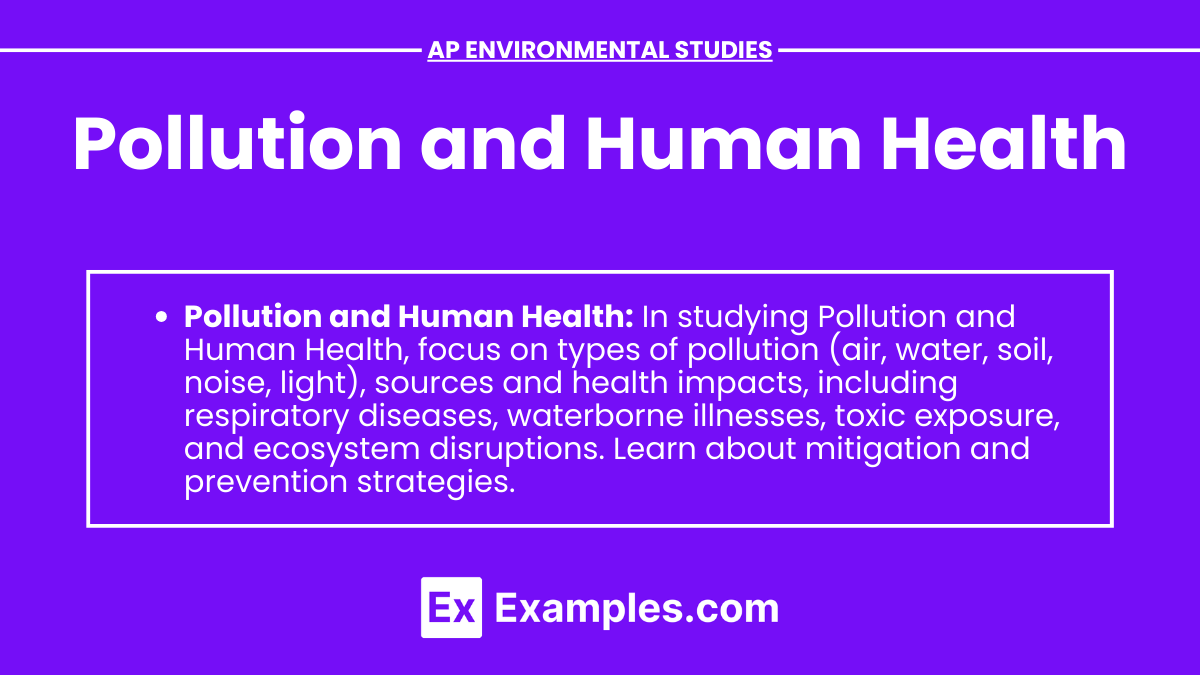Pollution significantly impacts human health, affecting the balance of ecology, ecosystems, and biodiversity within the biosphere. In AP Environmental Science, understanding how pollutants disrupt natural processes is crucial. Pollutants from industrial, agricultural, and urban activities contaminate air, water, and soil, leading to respiratory issues, waterborne diseases, and toxic exposure. Protecting the integrity of our ecosystems and biodiversity is essential for sustaining the health of the biosphere and human populations.
Learning Objectives
By studying pollution and human health, students will understand how pollutants affect organisms and contribute to climate changes. They will learn to identify sources of pollution and their impact on flora and fauna. Additionally, students will explore how human activities disrupt natural systems, leading to health problems and biodiversity loss. This knowledge is crucial for developing strategies to mitigate pollution and protect organisms, as well as maintaining a stable climate and healthy flora and fauna.
Types of Pollution
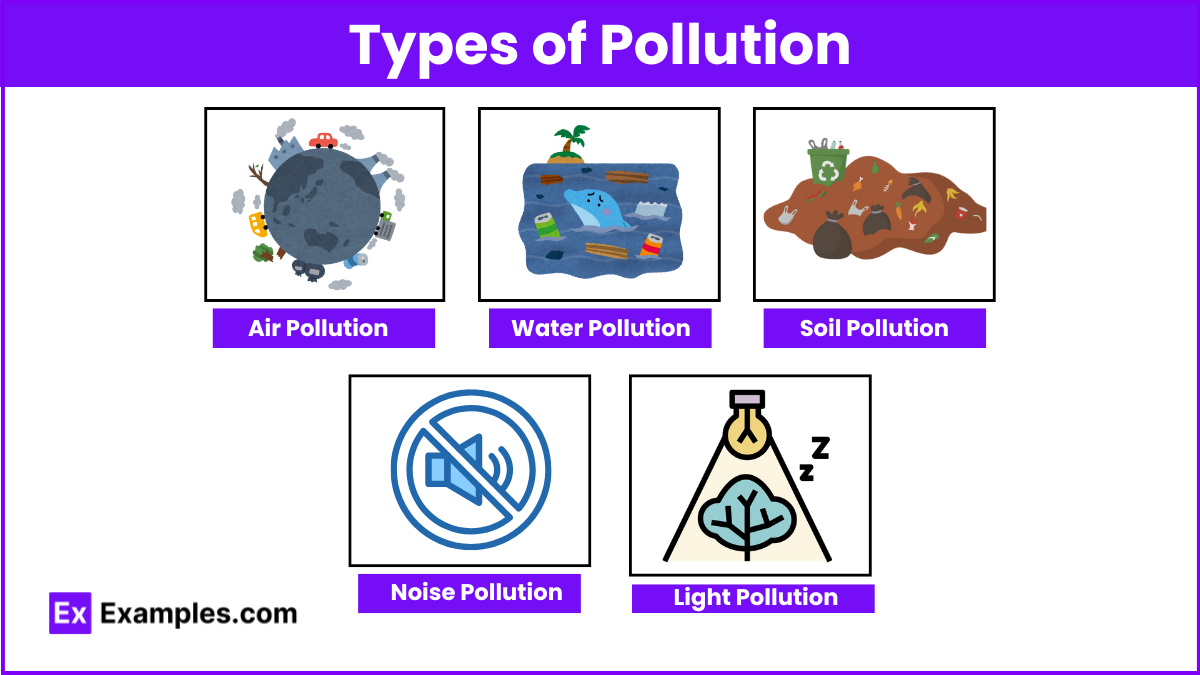
Air Pollution
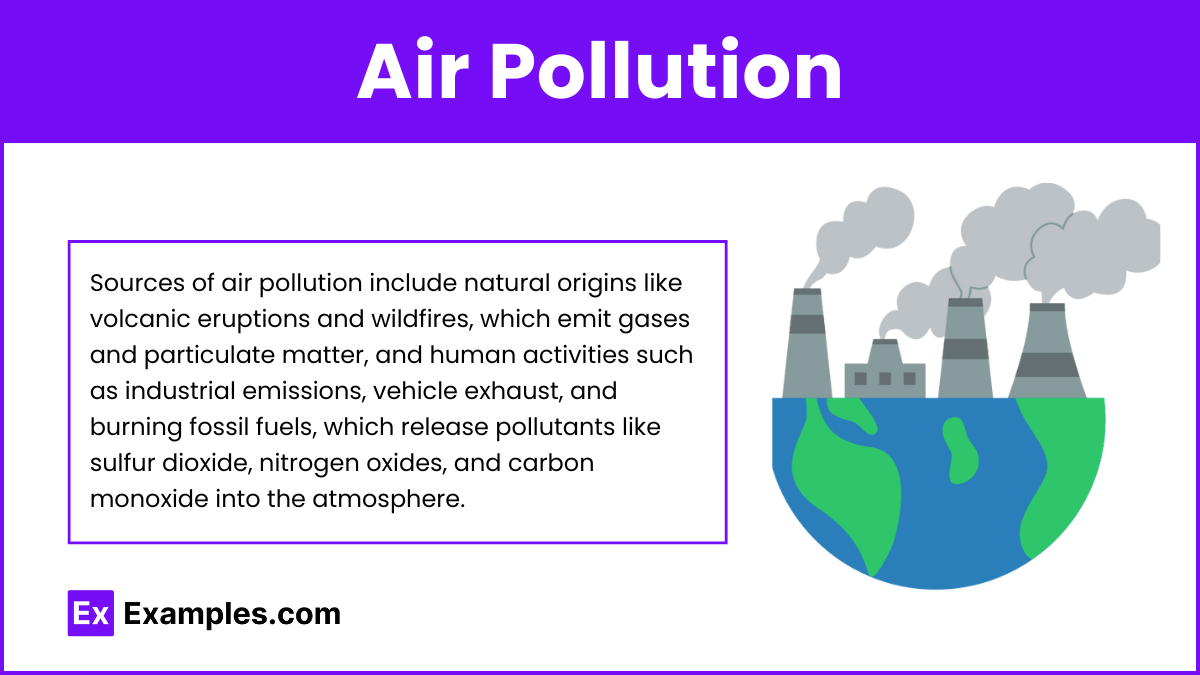
Sources:
- Industrial Emissions: Factories and power plants emit pollutants like sulfur dioxide (SO₂), nitrogen oxides (NOₓ), and particulate matter (PM).
- Vehicle Emissions: Cars and trucks release carbon monoxide (CO), NOₓ, hydrocarbons (HC), and PM.
- Burning of Fossil Fuels: Coal, oil, and natural gas combustion release CO₂, NOₓ, SO₂, and other pollutants.
- Natural Sources: Volcanic eruptions, wildfires, and dust storms contribute to air pollution.
Health Effects:
- Respiratory Issues: Asthma, bronchitis, and chronic obstructive pulmonary disease (COPD).
- Cardiovascular Problems: Heart attacks, hypertension, and strokes.
- Cancer: Long-term exposure to air pollutants like benzene and asbestos can cause cancer.
- Developmental and Reproductive Harm: Birth defects, premature births, and developmental delays in children.
Water Pollution
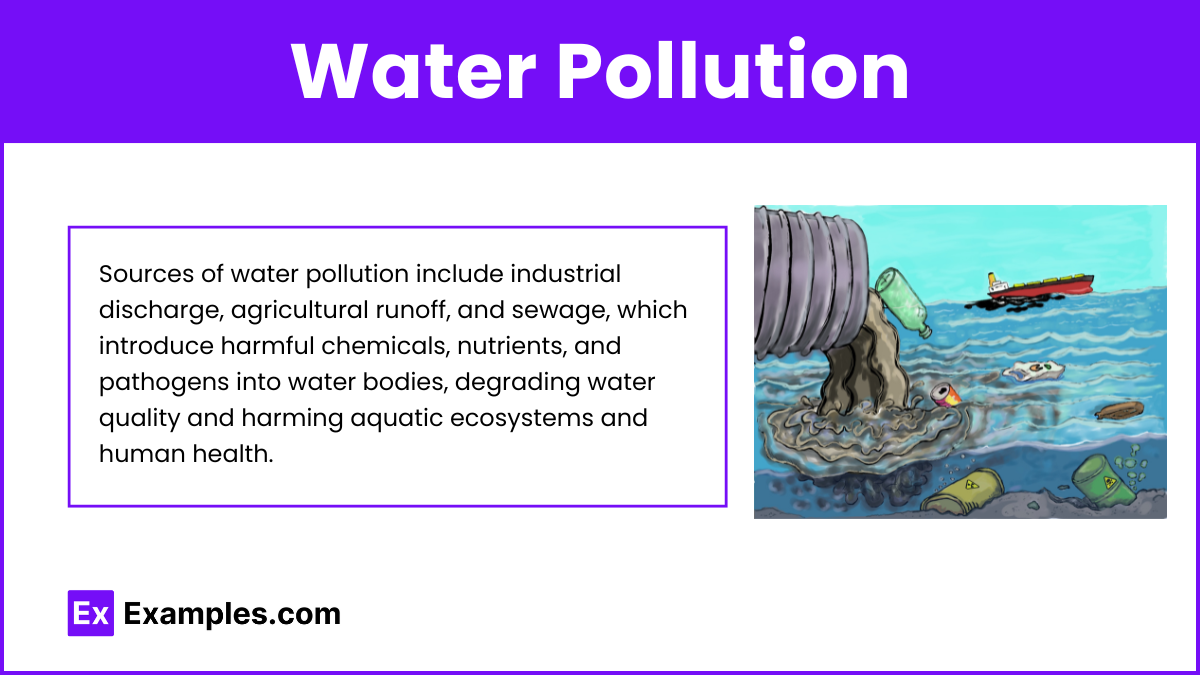
Sources:
- Agricultural Runoff: Pesticides, fertilizers, and animal waste entering water bodies.
- Industrial Discharge: Factories releasing chemicals, heavy metals, and toxic substances into rivers and lakes.
- Sewage and Wastewater: Untreated or inadequately treated sewage contaminating water sources.
- Oil Spills: Accidental spills from oil rigs and tankers polluting oceans and coastal areas.
Health Effects:
- Waterborne Diseases: Cholera, dysentery, hepatitis A, and giardiasis.
- Toxicity: Exposure to heavy metals like lead and mercury can cause neurological damage and kidney failure.
- Endocrine Disruption: Chemicals like bisphenol A (BPA) and phthalates interfere with hormone function.
- Cancer: Contaminants like arsenic and trichloroethylene can increase cancer risk.
Soil Pollution
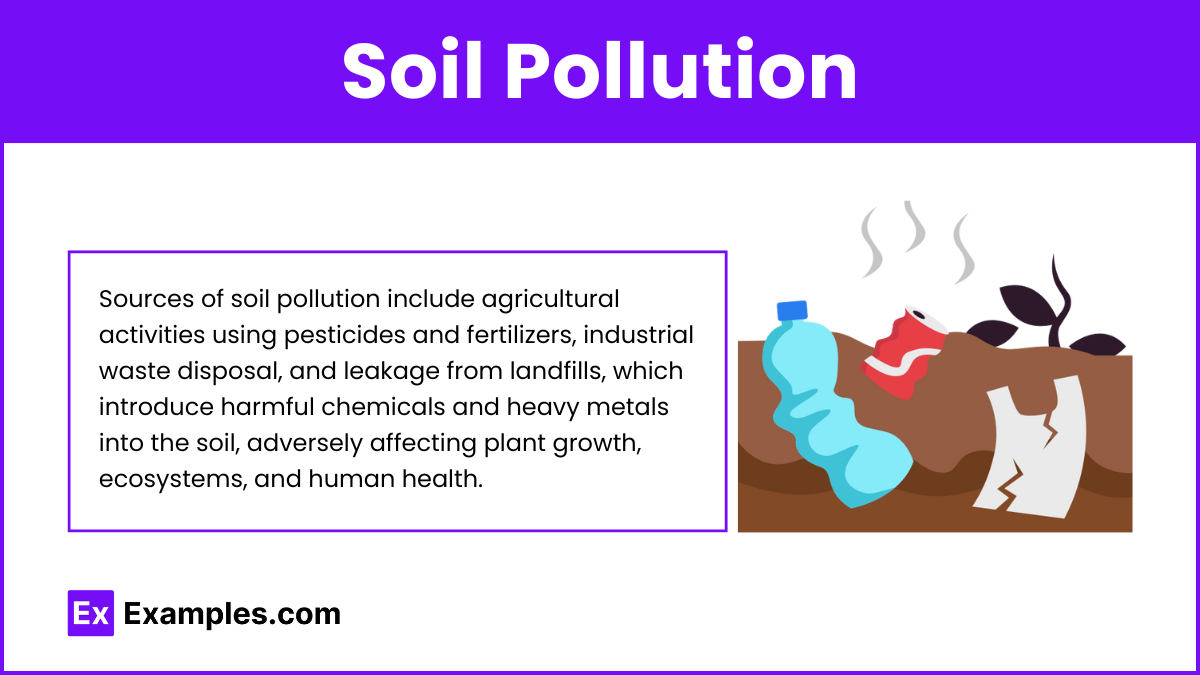
Sources:
- Agricultural Practices: Overuse of pesticides and fertilizers.
- Industrial Activities: Disposal of hazardous waste and heavy metals.
- Mining: Release of toxic substances like cyanide and mercury.
- Waste Disposal: Landfills leaking harmful chemicals into the soil.
Health Effects:
- Food Contamination: Crops absorbing pollutants can lead to ingestion of harmful chemicals.
- Direct Contact: Skin rashes, eye irritation, and respiratory problems.
- Bioaccumulation: Accumulation of toxins in the food chain, affecting human health.
Noise Pollution
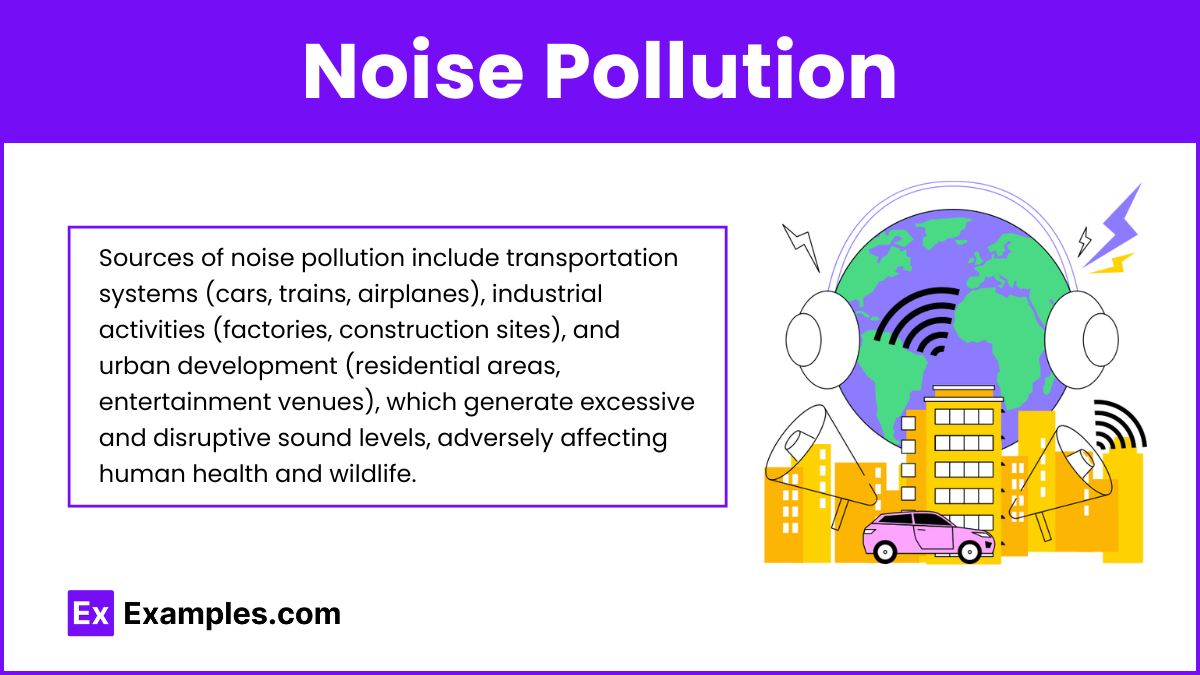
Sources:
- Transportation: Cars, airplanes, and trains.
- Industrial Activities: Factories and construction sites.
- Urban Development: High-density living and recreational activities.
Health Effects:
- Hearing Loss: Prolonged exposure to loud noises can cause permanent hearing damage.
- Stress and Anxiety: Constant noise can lead to increased stress levels and anxiety disorders.
- Sleep Disturbance: Noise pollution can interfere with sleep patterns, leading to insomnia and other sleep disorders.
- Cardiovascular Issues: Elevated blood pressure and increased risk of heart disease.
Light Pollution
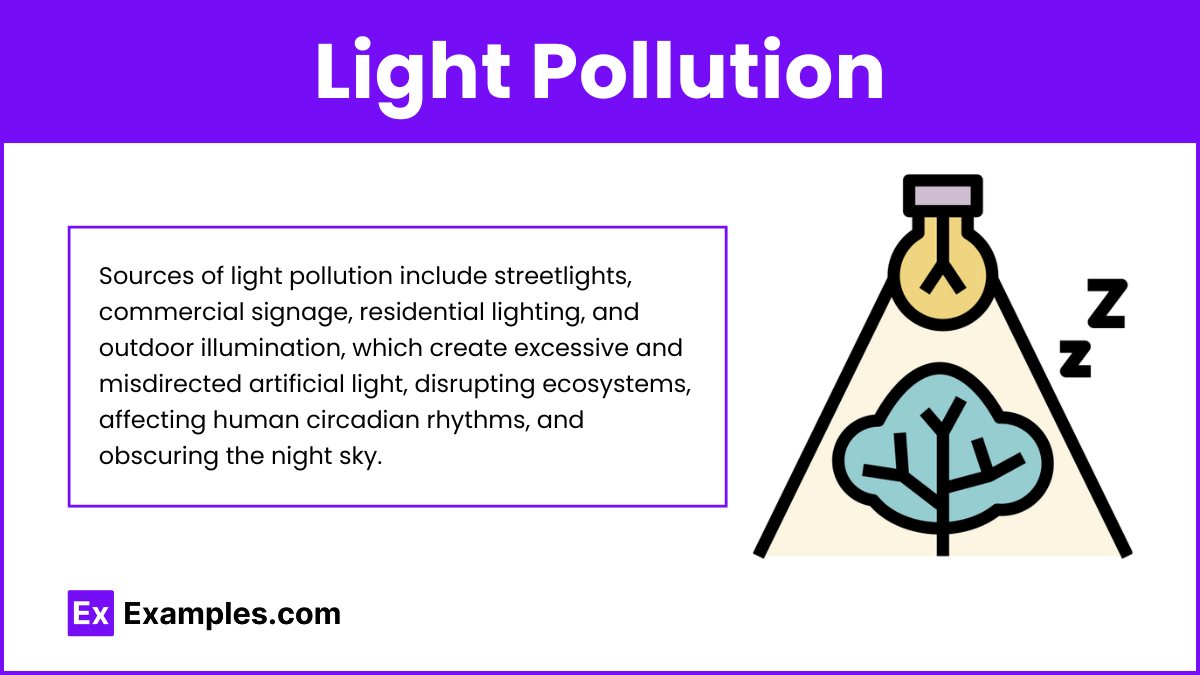
Sources:
- Urban Lighting: Streetlights, billboards, and building illumination.
- Outdoor Advertising: Bright signage and displays.
- Residential Lighting: Excessive use of outdoor and indoor lighting.
Health Effects:
- Disrupted Circadian Rhythms: Interference with the natural sleep-wake cycle, causing sleep disorders.
- Reduced Melatonin Production: Increased risk of cancer, particularly breast and prostate cancer.
- Vision Problems: Glare and light trespass affecting eye health.
Strategies to Reduce Pollution and Improve Human Health
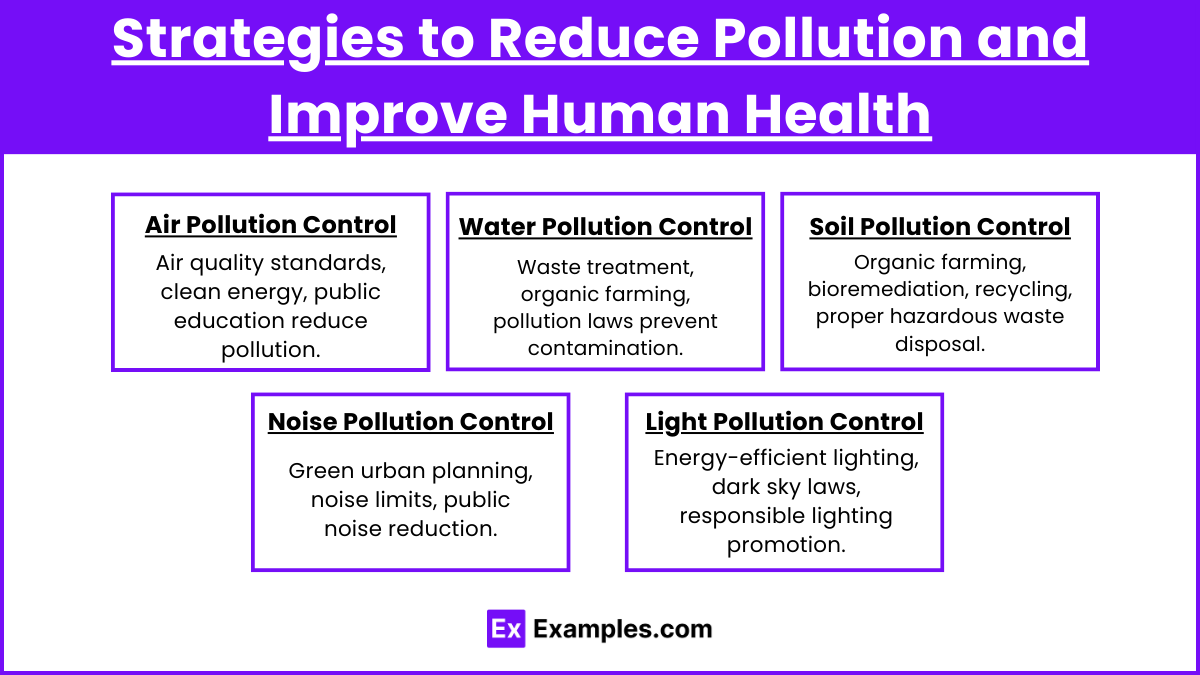
Air Pollution Control
- Regulations: Implementing and enforcing air quality standards.
- Technological Innovations: Developing cleaner energy sources and emission control technologies.
- Public Awareness: Educating the public on reducing pollution through sustainable practices.
Water Pollution Control
- Waste Treatment: Improving sewage and industrial wastewater treatment.
- Agricultural Practices: Promoting organic farming and integrated pest management.
- Legislation: Enforcing laws to prevent illegal dumping and pollution.
Soil Pollution Control
- Sustainable Farming: Using organic fertilizers and crop rotation.
- Remediation Techniques: Phytoremediation and bioremediation to clean contaminated soils.
- Waste Management: Proper disposal and recycling of hazardous waste.
Noise Pollution Control
- Urban Planning: Designing quieter cities with green spaces.
- Regulations: Enforcing noise limits and restrictions.
- Public Awareness: Encouraging noise reduction in communities.
Light Pollution Control
- Lighting Design: Using energy-efficient, shielded lighting fixtures.
- Legislation: Enforcing dark sky ordinances.
- Public Awareness: Promoting responsible lighting practices

